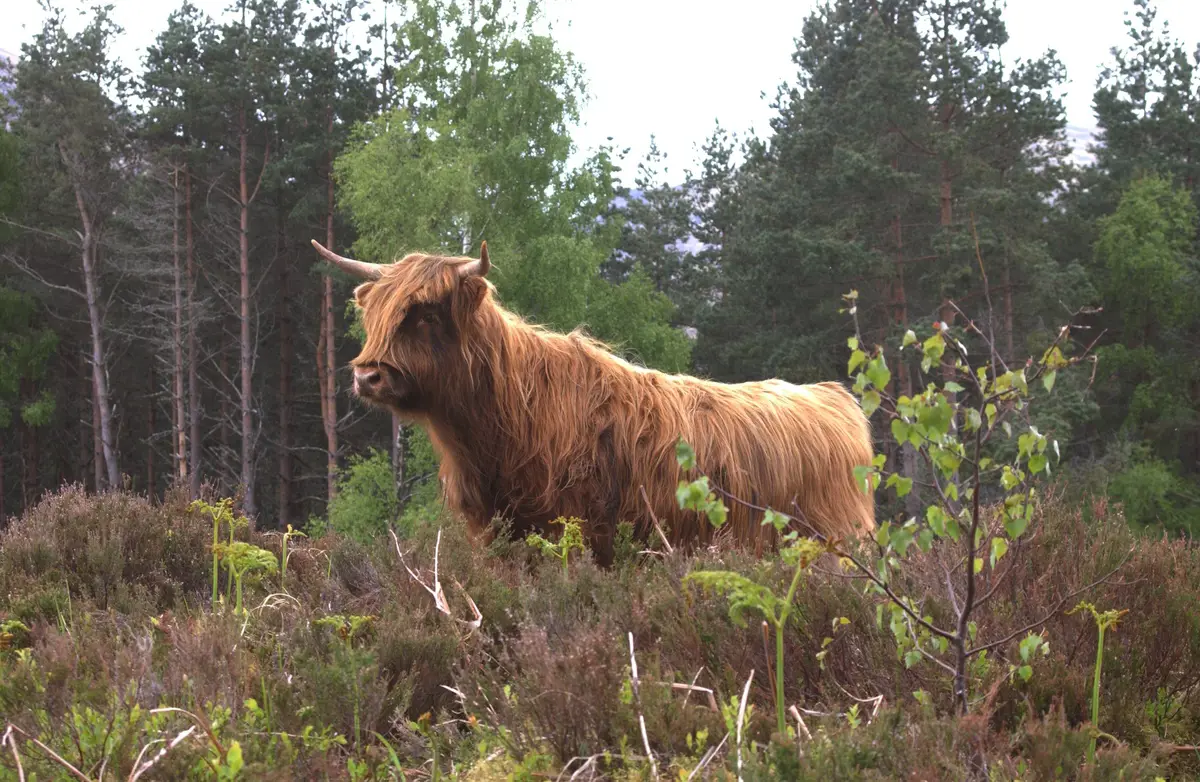Conservation grazing
Conservation grazing
To some people, conservation grazing must sound very strange. Surely grazing animals are bad for the environment? What if they eat rare plants and shrubs, trample the ground and frighten other wildlife?
Even if it is a good idea, what are cattle and sheep going to eat? After all, isn’t the land Forestry and Land Scotland manages - um – forest?

The first thing to remember is that almost a third of the land we manage is open ground – from coastal sand dunes and lowland bog to upland moorland and mountain tops. Around 67,000 hectares of this land is designated for conservation.
Secondly, grazing is actually far from damaging, and often has a vital role to play in improving, maintaining or enhancing these vital habitats and historic sites.
Why is conservation grazing important?
Species rich grasslands are early successional habitats. If left ungrazed, they will usually develop into less biodiverse grasslands, scrub or even woodland depending on the seed source nearby and the type of soil. These are often more common and don’t support the same species of plants and insects.
Grazing animals do two things:
- They tend to eat the lusher plant species, which in turn gives a competitive edge to the finer plants and flowers.
- They uptake nutrients such as nitrogen and phosphorus, preventing them from being recycled into the soil again. This means that more aggressive plants cannot invade and displace the rare plants which thrive in low nutrient conditions.
There are financial and social benefits too
While they’re doing their bit for biodiversity, cattle are also growing in size and value. Income from the cattle market eventually contributes to the cost of their upkeep. Grazing animals provide work for stockmen, contractors and agricultural industries. And by using native and rare breeds, we’re helping to protect domestic animals, not just wild ones.
What type of animals are best?
Cattle tear mouthfuls of vegetation – great when we want to reduce heavy cover. Sheep nibble and select specific plants, and are better for reducing the vegetation around vulnerable archaeological sites. Native breeds of ponies can also be effective conservation grazers.
Lochaber case study
Native breeds of cattle are helping to improve habitats for butterflies, including the rare chequered skipper and pearl-bordered fritillary. The cattle graze the hillside and trample the bracken, encouraging the food plants that butterflies and their larvae like to eat.
Careful management of grazing is also benefiting black grouse. Not only are cattle (and, in places, sheep) creating areas of short grass – perfect for males to display in the breeding season – they are also encouraging a wider variety of vegetation for the grouse and their chicks to feed on.
Galloway and Southern Ayrshire Biosphere Reserve case study
With cattle, we are attempting to reduce the dominance of purple moor grass and bracken, and improve conditions for other plant communities. Our efforts, in partnership with a local farmer, are also increasing the number and visibility of birds, invertebrates and other animals, as well as improving conditions for recreational walkers and reducing the risk of wildfire.